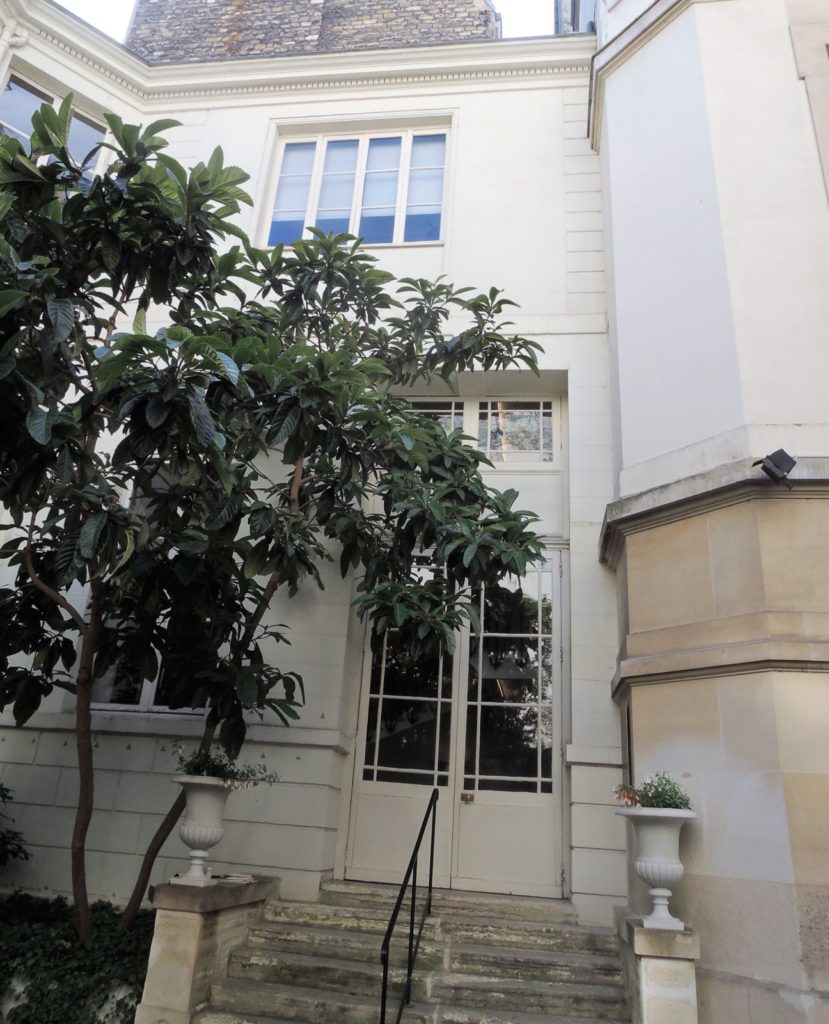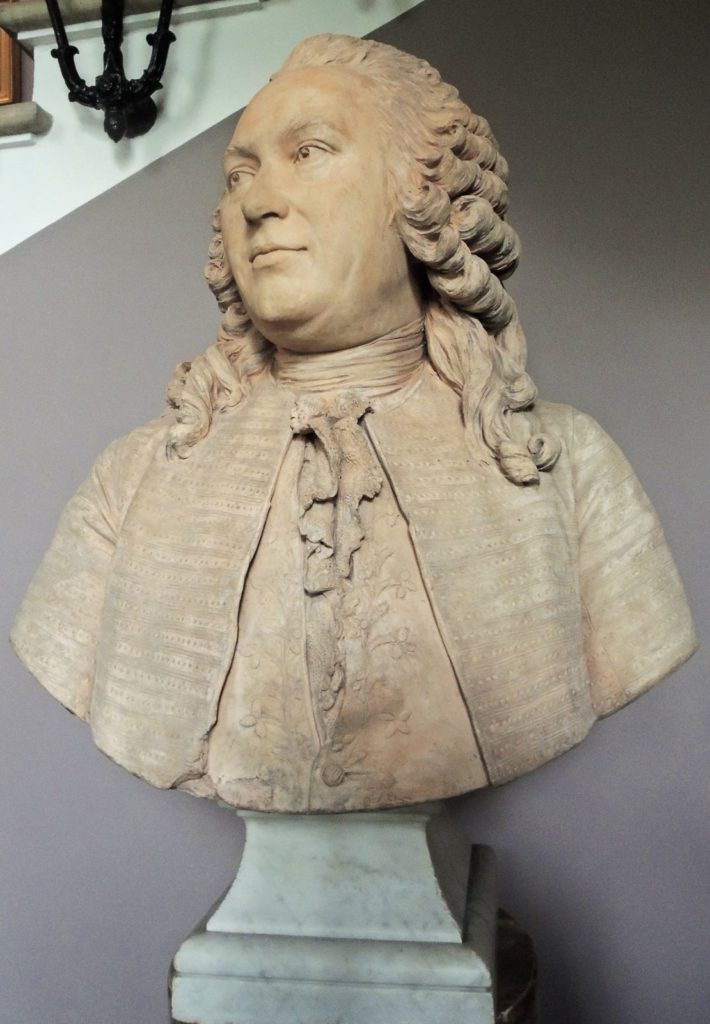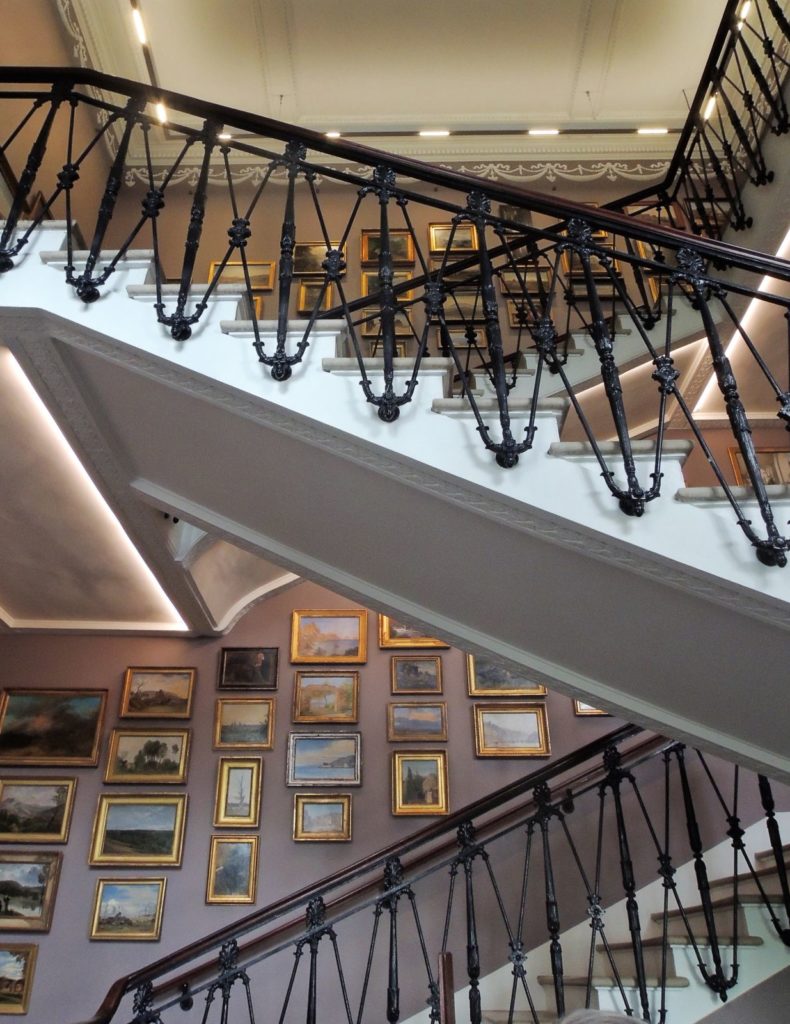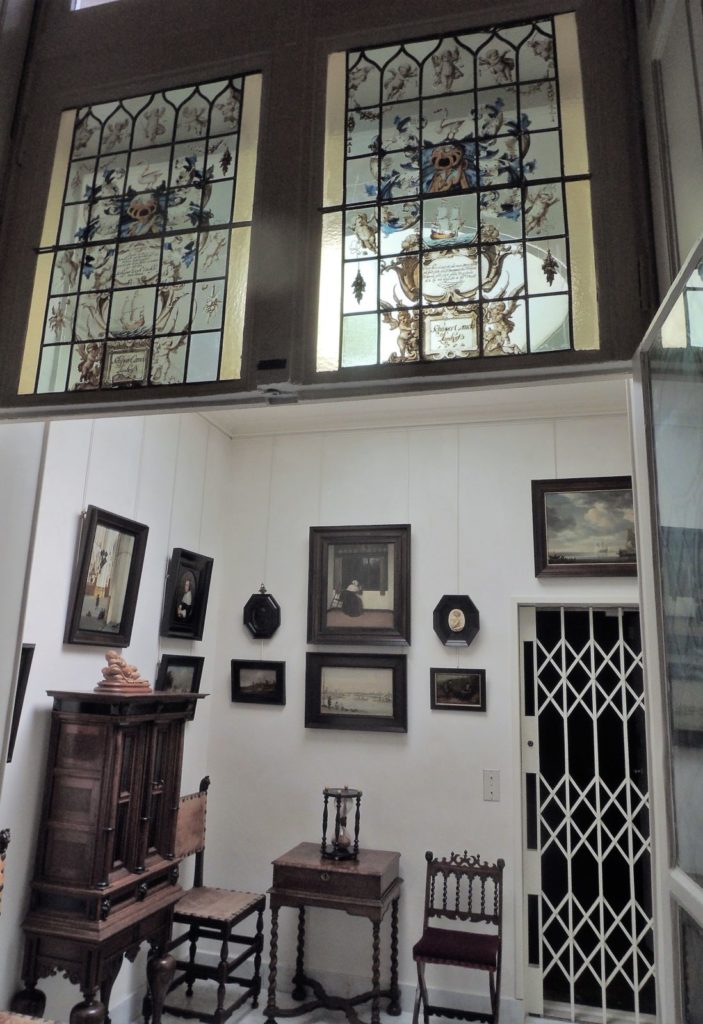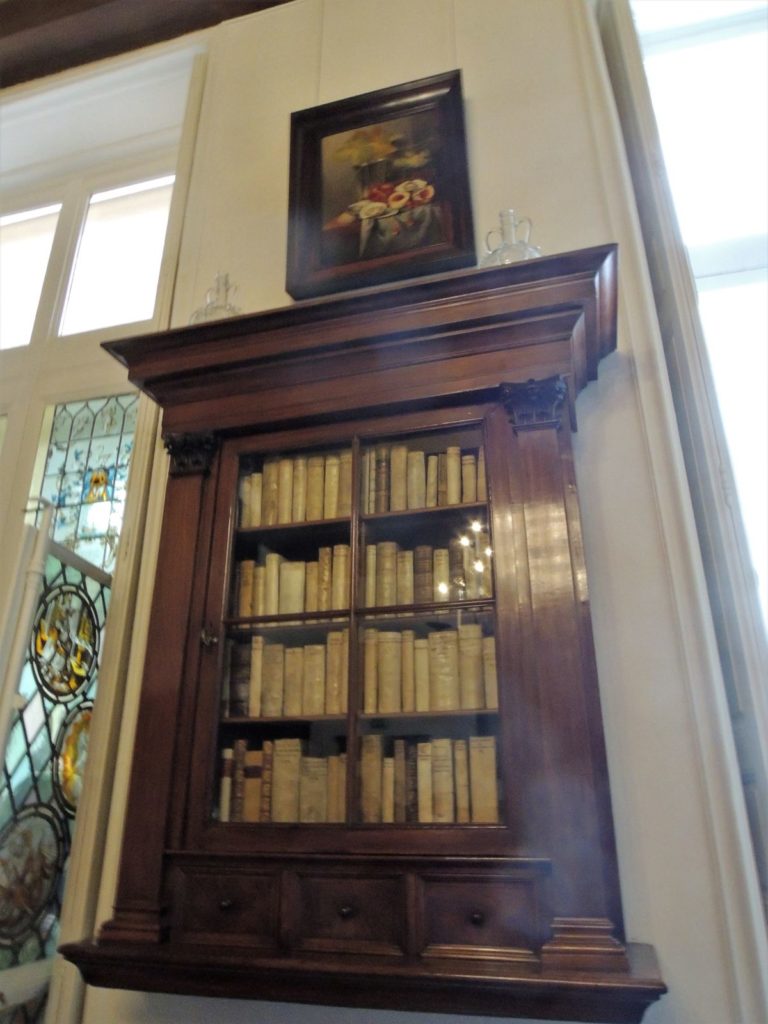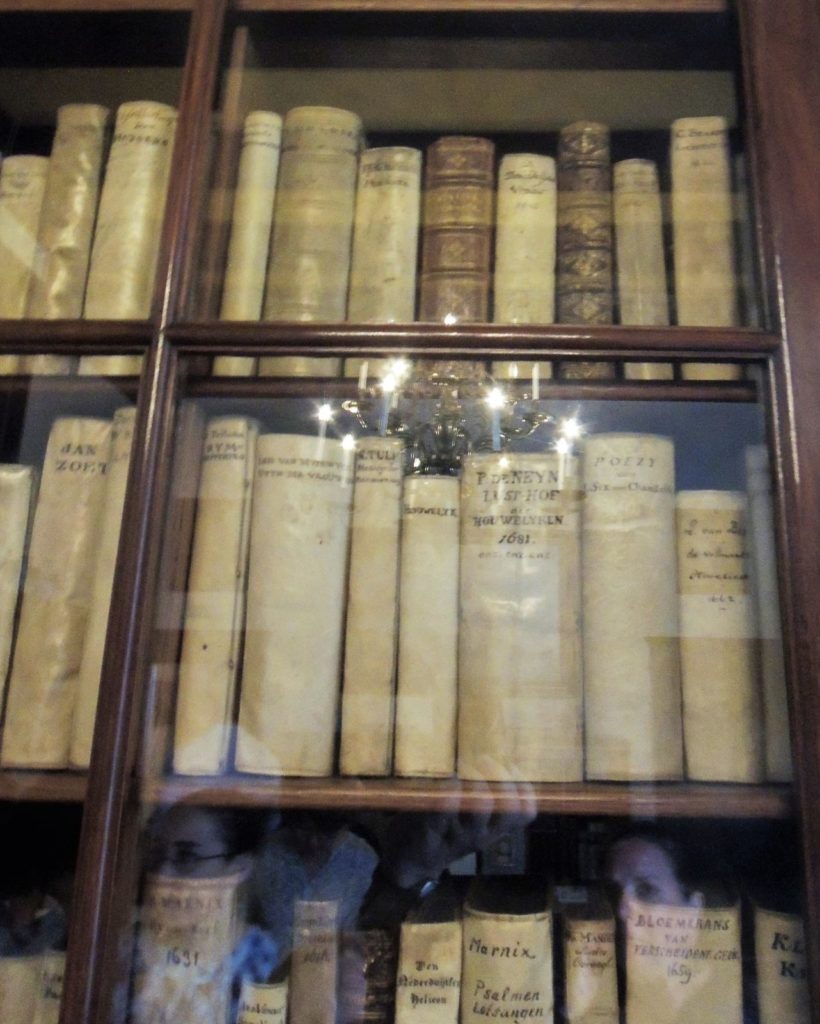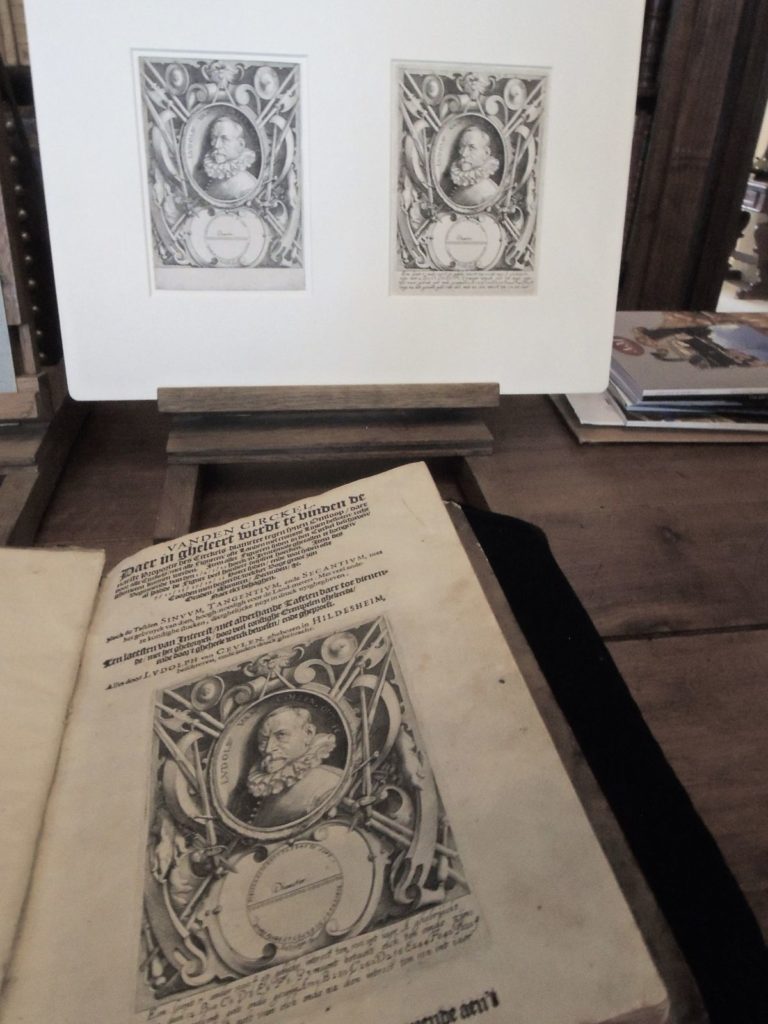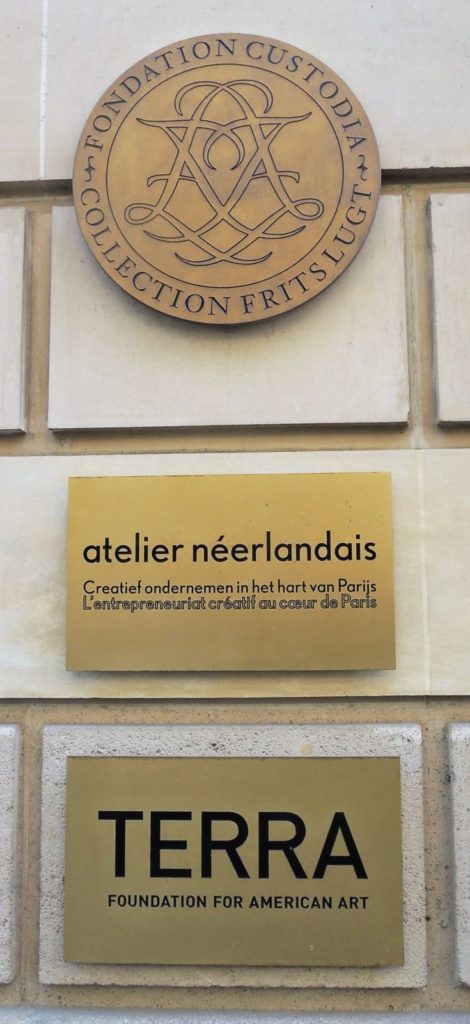 In 1947, Frits Lugt (1884-1970) established the Fondation Custodia in the historic hôtel Lévis-Mirepoix at 121 rue de Lille and endowed it with his entire of collection of paintings, drawings, prints, rare books, artists’ letters, and much more.
In 1947, Frits Lugt (1884-1970) established the Fondation Custodia in the historic hôtel Lévis-Mirepoix at 121 rue de Lille and endowed it with his entire of collection of paintings, drawings, prints, rare books, artists’ letters, and much more.
In 2015, the Terra Foundation for America Art opened a Center & Library upstairs from the Fondation, including a joint exhibition space and reading room. It appears to be a good collaboration. We were very fortunate to be allowed to tour both, including the Lugt art collection, housed in adjoining rooms in the eighteenth-century Hôtel Turgot.
Lugt, who began collecting in 1915, was a self-taught art historian and author whose books remain standard works to this day. The famous ‘L’ followed by the number Lugt assigned to sale catalogues and collector’s marks is recognized by all art historians.
Princeton University faculty and students have online access to Lugt’s Répertoire des catalogues de ventes publiques http://library.princeton.edu/resource/3932, which lists more than 100,000 art sales catalogues of the period 1600 to 1925 from libraries in Europe and the USA, both in French and in English. It can be searched on Lugt number, date, place, provenance, auction house and existing copies.
At the front door, you are greeted by a terra-cotta bust of Jacques Turgot, Baron de l’Aulne (1727-1781), which may have been sculpted by Jean-Antoine Houdon. All along the 18th-century staircase, the walls are filled with Lugt’s collection of painted landscapes.
One of the treasures pulled for us was a 1596 copy of Ludolf van Ceulen (1539-1610), Van den circkel: daer in gheleert werdt te vinden de naeste proportie des circkels-diameter tegen synen omloop, with a portrait of the author on the title page, engraved by Jacques de Gheyn II (1565-1629). Lugt also acquired a proof without lettering and a rare variant. See all three below.
“In the late sixteenth century, especially in the Netherlands, there was a revival of interest in the works of Archimedes. Van Ceulen was a part of this Archimedean renaissance, and early in his career, he read a translation of Archimedes’ treatise, Measuring the Circle. In this work, Archimedes estimated the value of pi by calculating the circumferences of polygons that just fit inside and outside the circle, reasoning (correctly) that the circumference of the circle must lie between those two values. Using polygons of up to 128 sides, Archimedes found that pi must lie between (using modern notation) 3.141 and 3.142. Van Ceulen found a way to increase the number of sides of the inscribed polygons from 128 to well into the millions, and he initially found a value of pi accurate to 20 decimal places. This number was engraved just below his portrait on the title page of his first book, Van den Circkel (1596).”

